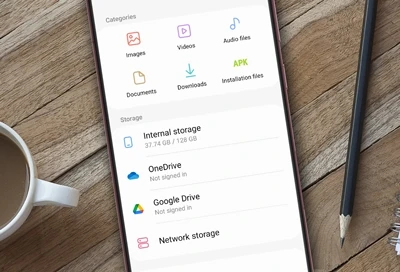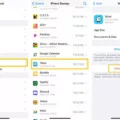Android devices can accumulate a variety of files over time, including cache, app data, and other miscellaneous files. These files can take up valuable storage space on your device and may even slow down its performance. In this article, we will focus on clearing the “Other” files category on your Android phone.
To get started, open the Settings app on your Android device. Look for the “Apps” option and tap on it. Here, you will find a list of all the apps installed on your device.
Scroll through the list and find the app from which you want to clear data. Tap on the app to open its settings. It’s important to note that deleting files from certain apps may cause them to run slower, so exercise caution when clearing data.
Once you’re inside the app’s settings, look for the “Storage” option and tap on it. Here, you will see two options: “Clear cache” and “Clear data.” Clearing the cache will remove temporary files that the app has stored, while clearing the data will delete any app-specific data, such as login information, preferences, and saved files.
If you want to clear the “Other” files category, you may need to take an additional step. Under the “Storage Statistics” tab, you will find a breakdown of the storage usage by the app. Look for the “Others” section and tap on it to view a list of files that are counted under this category.
Identify the files that you want to delete from this list. To delete them manually, you can use the “My Files” app, which is usually pre-installed on your Android device. Open the “My Files” app and navigate to the location where the files are saved. Select the files you want to delete and tap on the delete option.
It’s important to exercise caution when deleting files from the “Other” category, as some of them may be important for the proper functioning of certain apps. If you’re unsure about a particular file, it’s best to leave it untouched or seek assistance from a professional.
By regularly clearing app data and removing unnecessary files, you can free up storage space on your Android device and ensure smooth performance. Remember to only delete files that you are certain are not needed anymore, and always be mindful of the impact it may have on the app’s functionality.

How Do You Clear Other Storage on Android?
To clear “Other” storage on Android, you can follow these steps:
1. Open the Settings app on your Android device.
2. Scroll down and tap on “Storage” or “Storage & USB” (depending on your device).
3. You will see a breakdown of the different types of storage on your device. Look for the “Other” category, which may also be labeled as “Miscellaneous” or “Cached data”.
4. Tap on “Other” to view the details and options for managing this type of storage.
5. You will typically have the option to clear the cache or clear data for specific apps that are contributing to the “Other” storage. Tap on this option.
6. A list of apps using “Other” storage will be displayed. Select the app(s) you want to clear data for.
7. Tap on the “Clear cache” or “Clear data” button to remove the unnecessary files or data associated with the selected app(s).
How Do You Delete Other Files From Your Samsung Storage?
To delete other files from your Samsung storage, follow these steps:
1. Open the “Settings” app on your Samsung phone.
2. Scroll down and tap on “Device care” or “Device maintenance,” depending on your phone model.
3. Within the Device care or Device maintenance menu, tap on “Storage” or “Storage and memory.”
4. You will see a breakdown of your storage usage. Tap on the “Other” category to view the files counted under this category.
5. Once you have identified the files in the Other category that you want to delete, exit the Settings app.
6. Locate and open the “My Files” app on your Samsung phone. This app allows you to navigate through your phone’s storage and manage files.
7. In the My Files app, browse through the folders to find the files you want to delete. You can explore internal storage or external storage if you have an SD card inserted.
8. When you find the files you want to remove, long-press on the file to select it. You can select multiple files by tapping on each file while holding the previous selection.
9. After selecting the files, tap on the “Delete” button, usually represented by a trash bin icon. Confirm the deletion if prompted.
10. The selected files will be deleted from your Samsung phone, freeing up space in the Other category.
Note: Be cautious when deleting files, as some may be important system files or personal data. Ensure that you are deleting unwanted files and not crucial ones necessary for the proper functioning of your device.
Conclusion
Android “Other” files refer to various types of data that are not categorized into specific app or system files. These files can accumulate over time and take up storage space on your Samsung phone. It is important to regularly clear these files to optimize your device’s performance and free up storage.
To clear Android “Other” files, you can follow the steps mentioned earlier. Open the Settings, go to Apps, select the app you want to clear data from, tap Storage, and then choose either Clear cache or Clear data. It is worth noting that deleting files from an app you frequently use may result in the app running slower.
If you want to identify the specific files listed under the Other category, you can navigate to the Storage Statistics tab in the app’s settings. By tapping on Others, you will be shown a list of files that your Samsung phone categorizes under this section. To manually delete these files, you can use the My Files app.
By regularly clearing Android Other files, you can ensure that your device operates smoothly, avoids unnecessary clutter, and has ample storage space for your apps, media, and other important files.












